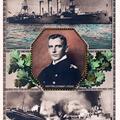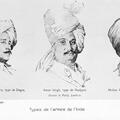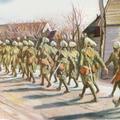Armee Indio-Anglaise - Cordonnier Indien [Indian Shoemaker]
A striking portrait of an Indian shoemaker in France during World War I, who would have accompanied the 130,000 or so Indian troops who fought on the Western front during the first two years of the war.

![Armee Indio-Anglaise - Cordonnier Indien [Indian Shoemaker] Armee Indio-Anglaise - Cordonnier Indien [Indian Shoemaker]](https://www.paperjewels.org/sites/default/files/styles/square_thumbnail/public/slides/armee-indio-anglaise-cordonnier-indien.jpg?itok=Ghc3gIlV)



![[British Flag] [British Flag]](https://www.paperjewels.org/sites/default/files/styles/square_thumbnail/public/slides/british-flag_0.jpg?itok=PfHGlfXa)



![[Jhelum Recruiting] [Jhelum Recruiting]](https://www.paperjewels.org/sites/default/files/styles/square_thumbnail/public/slides/jhelum.jpg?itok=TIMVYrN1)
